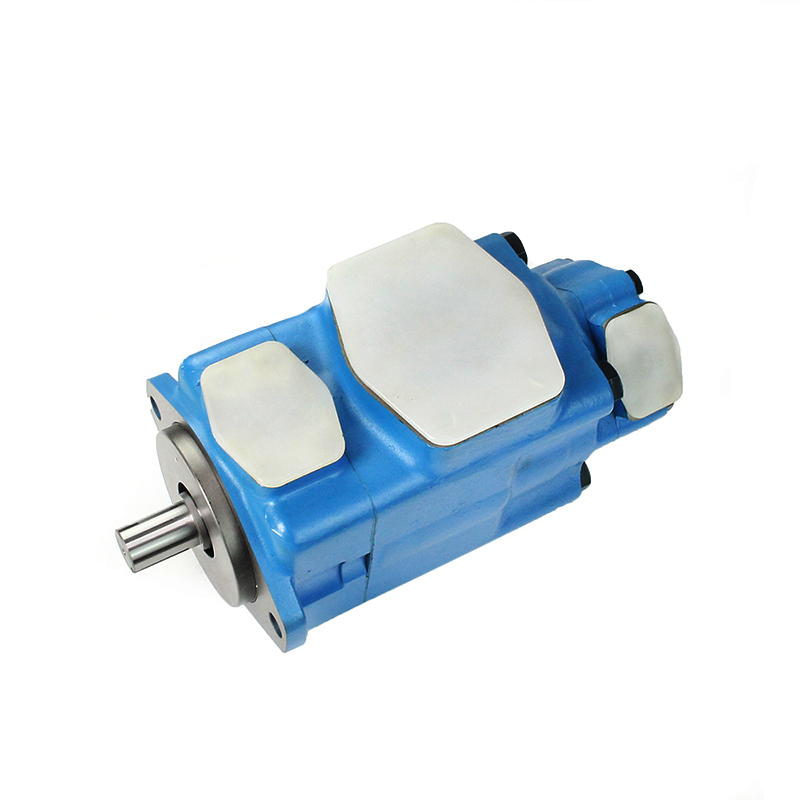Introduction to Vickers Hydraulic Vane Pumps
Vickers hydraulic vane pumps are among the most trusted and efficient hydraulic power components in the fluid power industry. Renowned for their reliability, low noise levels, and precise performance, these pumps are widely used in industrial machinery, mobile equipment, and heavy-duty hydraulic systems. Manufactured by Eaton under the Vickers brand, they combine engineering excellence with proven technology to deliver consistent hydraulic power for demanding applications.
These pumps operate on the principle of positive displacement, using vanes that slide within a rotating rotor to move hydraulic fluid efficiently. The combination of compact design, high efficiency, and long service life makes Vickers hydraulic vane pumps a preferred choice across numerous sectors including manufacturing, marine, and construction.
How Vickers Hydraulic Vane Pumps Work
Understanding the operation of a Vickers hydraulic vane pump helps users optimize performance and maintain system reliability. These pumps use a rotating element called a rotor, which contains several slots where flat vanes are fitted. As the rotor turns, centrifugal force pushes the vanes outward against the internal surface of the pump casing (cam ring), trapping and moving hydraulic fluid through the system.
Key Operational Phases
- Fluid Intake: As the rotor spins, the vanes retract, creating a low-pressure area that draws hydraulic fluid into the pump chamber.
- Compression and Transfer: The fluid is trapped between the vanes and the casing as the rotor continues to turn.
- Discharge: When the vanes approach the discharge port, they push the trapped fluid out under high pressure into the hydraulic circuit.
This simple yet effective mechanism ensures smooth fluid delivery with minimal pulsation, contributing to the pump’s reputation for quiet and consistent operation.
Key Features and Design Advantages
Vickers hydraulic vane pumps are designed with precision-engineered components to provide superior performance under continuous operation. Their construction reflects decades of hydraulic innovation and practical improvements tailored to industrial needs.
| Feature | Benefit |
|---|---|
| Balanced Vane Design | Reduces side loads on bearings, improving service life and efficiency. |
| Compact Construction | Saves installation space and simplifies system design. |
| Low Noise Operation | Minimizes vibration and acoustic noise, ideal for noise-sensitive environments. |
| High Efficiency | Maintains volumetric efficiency even under high pressure and temperature conditions. |
| Replaceable Cartridge Kits | Allows easy maintenance and quick replacement without disconnecting system piping. |
Types of Vickers Hydraulic Vane Pumps
Vickers offers a wide range of vane pumps tailored to different pressure and flow requirements. The major classifications are based on the configuration and number of stages. Understanding these variations helps users choose the right pump for their system needs.
1. Single Vane Pumps
These pumps have one cartridge assembly and are typically used in low- to medium-pressure applications. They provide steady flow with compact size, making them suitable for machine tools, plastic injection machines, and mobile equipment.
2. Double Vane Pumps
Double pumps consist of two pumping units combined in a single housing. They are ideal for systems that require two different flow rates or circuits, such as steering and lift functions in mobile hydraulic systems. The dual design enhances efficiency and flexibility in system design.
3. Variable Displacement Vane Pumps
Variable displacement versions automatically adjust flow output according to system demand, helping conserve energy and reduce heat generation. These are particularly useful in energy-efficient hydraulic systems and precision industrial machinery.
Applications of Vickers Hydraulic Vane Pumps
Due to their efficiency and reliability, Vickers hydraulic vane pumps are used across a diverse range of applications. Their adaptability and consistent performance make them a preferred solution wherever controlled fluid power is required.
- Industrial machinery — including presses, machine tools, and material handling systems.
- Mobile hydraulics — such as forklifts, tractors, and construction vehicles.
- Marine and offshore systems — for winches, steering, and deck machinery.
- Plastic molding equipment — ensuring smooth, repeatable motion control.
- Energy and mining industries — powering drilling and extraction systems under harsh conditions.
Maintenance and Troubleshooting Tips
Like all hydraulic components, Vickers vane pumps perform best with regular maintenance and proper system care. Routine checks ensure that wear, contamination, and improper operating conditions do not affect performance or longevity.
Routine Maintenance Practices
- Regularly check hydraulic fluid levels and maintain recommended viscosity and cleanliness.
- Inspect the vane cartridge assembly for wear or scoring and replace it if necessary.
- Ensure filters are replaced as part of scheduled maintenance to prevent contamination.
- Monitor operating pressure and temperature to avoid exceeding design limits.
- Listen for unusual noise or vibration, which may indicate cavitation or air ingress.
Common Troubleshooting Guide
| Problem | Possible Cause | Suggested Solution |
|---|---|---|
| Low Output Flow | Worn vanes or rotor, low fluid level | Replace worn parts, refill reservoir, and remove air. |
| Excessive Noise | Air entrainment or cavitation | Check suction line for leaks; ensure correct fluid viscosity. |
| Overheating | Excessive pressure or inadequate cooling | Reduce system load and improve cooling efficiency. |
| Leakage | Damaged seals or incorrect installation | Replace seals and ensure proper torque on fittings. |
Why Choose Vickers Hydraulic Vane Pumps
Vickers pumps are a trusted choice due to their combination of precision engineering, proven performance, and ease of maintenance. The brand’s extensive global support network and availability of replacement parts further enhance their value to users worldwide. Whether for OEM applications or system upgrades, these pumps provide an excellent balance between cost, reliability, and efficiency.
Their modular cartridge design allows fast repair without disconnecting hydraulic lines, minimizing downtime and maintenance costs. Additionally, the wide selection of flow and pressure configurations ensures a solution for almost any hydraulic requirement.
Conclusion: Precision and Performance in Every Application
The Vickers hydraulic vane pump remains a benchmark for reliability and performance in the hydraulic industry. Its balance of durability, low noise, and high volumetric efficiency makes it suitable for countless applications that demand precision and endurance.
With proper maintenance and correct system integration, these pumps can deliver years of trouble-free operation. For engineers and operators seeking dependable hydraulic performance, Vickers vane pumps are a proven investment in efficiency and quality.


 English
English русский
русский Español
Español عربى
عربى

